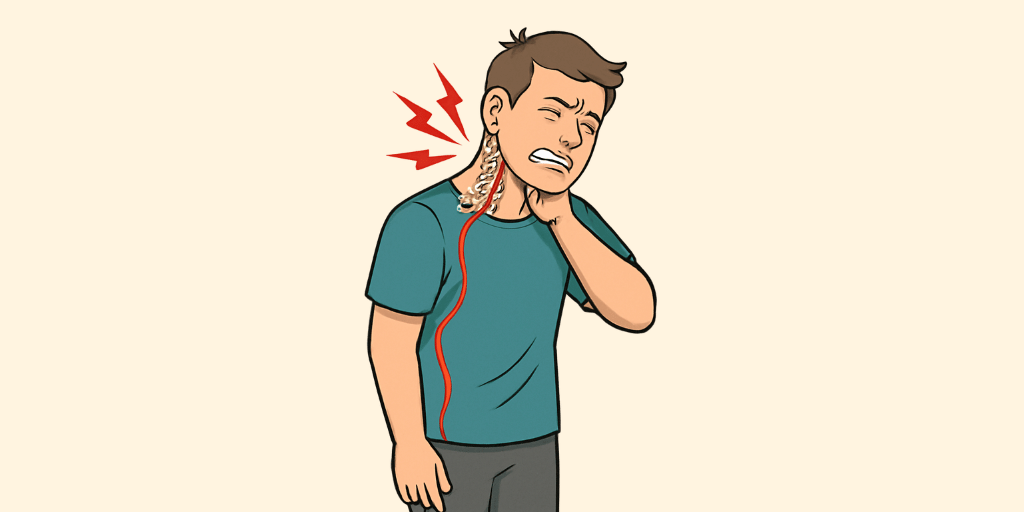Ayurvedic Name: Vishwachi
Description:
Cervical Rediculopathy is a neurological disorder similar to brachial neuralgia, characterized by pain, tingling, and weakness radiating from the neck to the arms. It is resulting from Vata vitiation, affecting the nerves supplying the upper limbs. The pain is often aggravated by improper posture, excessive strain on the neck, or degenerative changes in the cervical spine. Ayurvedic treatment involves Snehana, Swedana, Nasya therapy, and herbal medicines like Guggulu, Eranda, and Bala to strengthen the nervous system and reduce inflammation.
Signs & Symptoms:
- Grivavata (Cervical Radiculopathy): Pain, numbness, and tingling in the neck, shoulders, and arms due to nerve compression.
- Shwasa (Breathlessness): Difficulty in breathing, especially when the condition affects neck muscles involved in breathing.
- Stambha (Stiffness): Stiffness in the neck and upper back, making it difficult to turn the head.
- Vishama Agni (Irregular Digestion): Digestive issues, often associated with discomfort from muscle spasms.
- Dourbalya (Weakness): Muscle weakness or reduced sensation in the arms or hands.
- Gaurava (Heaviness in the Body): A feeling of heaviness in the neck, shoulders, and arms, due to nerve compression.
Diagnosis:
Spurling’s Test and MRI Cervical Spine
Risk Factors:
- Dietary Factors
Lack of Anti-inflammatory Foods: Insufficient intake of anti-inflammatory foods such as omega-3-rich foods (salmon, flaxseeds), leafy greens, and turmeric can exacerbate symptoms of cervical radiculopathy.
Excessive Sugar and Processed Foods: A diet high in sugar and processed foods can promote inflammation in the body, worsening nerve conditions. - Lifestyle Factors
Poor Posture: Incorrect posture, especially while using computers or mobile devices, can strain the cervical spine and contribute to cervical radiculopathy.
Repetitive Neck Movements: Frequent, repetitive motions, such as looking down at a screen or working with the neck in awkward positions, can cause nerve compression. - Medical Conditions
Herniated Discs or Bone Spurs: Degenerative changes such as herniated discs or bone spurs in the cervical spine can compress the nerves, leading to radiculopathy.
Osteoarthritis or Spinal Stenosis: These conditions can cause narrowing of the spaces in the spine, leading to nerve compression in the cervical region.
Complications:
- Neck Pain (Griva Shoola): Persistent neck pain, often radiating to the shoulders or arms, is a common complication.
- Loss of Sensation (Sannipata Gyanah): Nerve compression may cause numbness, tingling, or a “pins and needles” sensation in the arms or hands.
- Muscle Weakness (Mamsa Dourbalya): Prolonged nerve compression can lead to weakness in the upper limbs, affecting grip strength and dexterity.
- Headaches (Shira Shoola): Cervical radiculopathy can cause tension headaches due to neck strain and nerve irritation.
- Impaired Mobility (Chalana Vikruti): Difficulty turning the neck can limit mobility and affect daily activities like driving or working.
Epidemeology:
More common in individuals between ages 40-60, with a higher incidence in men.
Affects 3-5% of the population at some point in their lives, with degenerative changes in the cervical spine being the most common cause.
Higher prevalence in individuals with a history of neck injuries, heavy lifting, or poor posture.
A major cause of cervical radiculopathy is degenerative disc disease, which increases with age.

